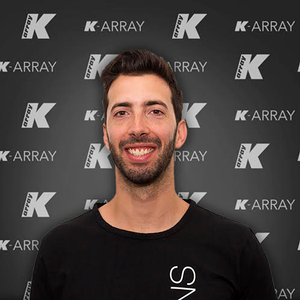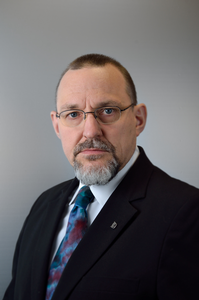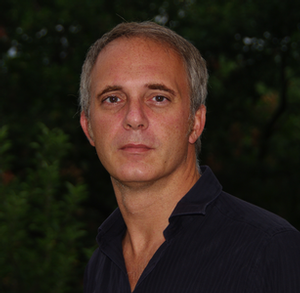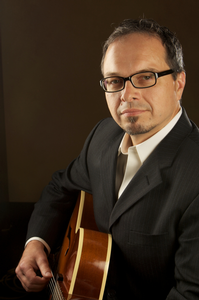AES Milan 2018
Professional Sound Expo Session Details
Thursday, May 24, 10:00 — 10:45 (PSE Stage)
PSE01 - The Importance of Thermal Simulation in Loudspeaker Design: Case Study for a Compression Driver
Presenters:Marco Baratelli, Faital S.p.A. - Milan, Italy
Grazia Spatafora, Faital S.p.A. - Milan, Italy
Faital S.p.A. makes use of FEM simulation in order to predict heating phenomena and minimize the potential permanent damage to the coil for a wide variety of products. All heat transfer mechanisms are important: conduction, convection, and radiation. Compression drivers are high efficiency electroacoustic transducers dedicated to high frequencies. They are designed to produce high SPL levels, usually coupled to a horn or waveguide. Due to their spectrum of operation these devices experience incredibly small membrane excursions, hence they can be considered approximately static. In other words, compression drivers do not take advantage of the cooling effects that usually a woofer coil experiences while moving, as air is strongly pushed and pulled in and out of the air gap. For this reason these devices can be sensitive to severe heating, which in extreme cases can lead to permanent damage of the coil by combustion of the insulating enamel.
The outcomes of the presented case study were compared with an equivalent measurement. Results show a satisfactory match between the model and the measurements, with a worst case error of 5%.
Thursday, May 24, 11:00 — 11:45 (PSE Stage)
PSE02 - The Advantages of Electronic Beam Steering and its Relation with FIR Filters
Presenter:Daniele Mochi, K-array - Florence, Italy
The ability to digitally adjust the dispersion of a line array element not only ensures the same listening experience to all audience members but, at the same time, limits the noise pollution in the areas where the sound pressure must be kept at a minimum. This presentation discusses advantages of Electronic Beam Steering (EBS) using FIR filters by providing extremely high frequency resolution.
Thursday, May 24, 12:00 — 12:45 (PSE Stage)
PSE15 - Progressive Directivity Array: Technology Overview and Performance Advantages for Sound Reinforcement Systems
Presenter:Moreno Zampieri, Bose Professional
The concept and advantages of Progressive Directivity Array (PDA) was introduced at the ISEAT 2015 convention. The primary advantage of the PDA compared to conventional approaches such as line-array or point-source speakers is that the intended tonality can be achieved regardless of the room conditions (shape and material) with consistency throughout the target audience area not just for a single listening point. The study clearly indicates that precise coverage control to match the audience area with continuity of the sound source without gaps between modules are two crucial elements to achieve the primary objective. In this session adaptation of the PDA concept to the real product as a modular approach is described with performance of the product followed by application of the products to real world examples.
Thursday, May 24, 13:00 — 13:45 (PSE Stage)
PSE04 - FPGA Effects, Microphone and Preamp Modeling
Antelope Audio is a professional audio equipment manufacturer with over 20 years of experience in digital and analogue audio technologies. The company is designing advanced yet affordable audio interfaces; the industry’s finest master clocks and premium FPGA FX. Among its latest endeavors find a collection of vintage mic emulations, interfaces with discrete preamps and modelling microphones.
Thursday, May 24, 14:00 — 14:45 (PSE Stage)
PSE05 - The Networked Studio: A Dream or Reality?
Presenter:Jan Lykke, NTP
The presentation will discuss the use of networked audio technologies such as Dante and AES67 in music and audio post-production studios. It will look at pros and cons of networked technology, what benefits and challenges you may run into, and illustrated with real-life examples. The topic of latency will also be covered.
Thursday, May 24, 15:00 — 15:45 (PSE Stage)
PSE06 - Eventide H9000 Multichannel FX Platform
Presenter:Patrick Flores
In this presentation, we will be talking about Eventide's rich history of 47 years of audio innovations and introduce the H9000 – our next generation Harmonizer. Designed for high-end recording, mastering, and post-production studios, the H9000 leverages the latest advances in technology and features the processing power of 16 DSP engines powered by four quad-core ARM processors. Topics covered will include processing up to 64 channels of audio, D.A.W. integration with the emote app, creating FX chains, and network capability with optional Dante, MADI and more.
Thursday, May 24, 16:00 — 16:45 (PSE Stage)
PSE07 - The Italian Way—Italian Recording Studios
Presenters:Marco Borsatti
Sabino Cannone
Luca Pilla, Audiofader.com - Milano, IT
Discover how two of the very best Italian sound engineer work for international production, staying in Italy. Marco Borsatti (marcoborsatti.com) and Sabino Cannone (morevox.com) will explain how they adapt recording, mixing and mastering for international audience in respect of Italian sound, with audio example and plug-ins explanation. We will analyze also how technology has changed their workflow, their sound and their recording studios. Presenter: Luca Pilla, editor of Audiofader.com. Workshop will be handling only in Italian language.
Thursday, May 24, 17:00 — 17:45 (PSE Stage)
PSE03 - The Effect of Acoustic Center in Subwoofer
Presenter:Paolo Martignon, Contralto Audio srl - Parma (PR), Italy
This presentation is the outcome of an investigation begun in 2017 which sees the collaboration between Contralto Audio and Merlijn Van Veen. It was already presented briefly in AES143 in New York and is proposed again in this context where more room for details and discussion is allowed. As explained by J.Vanderkooy in his paper “The Low-Frequency Acoustic Centre: Measurement, Theory and Application,” the acoustic center of a direct radiating subwoofer unit is placed ahead respect to the driver membrane, at a distance depending on driver and cabinet dimensions. This has effects on acoustic simulations and it deserves some attention to avoid errors. Measurements are shown that confirm acoustic center position theoretical calculation and a discussion is made about its effect on the definition of models for accurate simulations.
Friday, May 25, 10:00 — 10:45 (PSE Stage)
PSE08 - Generation 3 - E-coustic Systems Electronic Architecture
Presenter:Steve Barbar, E-Coustic Systems - Belmont, MA USA
E-coustic Systems Electronic Architecture™ is the product of over 30 years research in the fields of digital audio, neuroscience, and acoustics—refined by more than 20+ years of successful installations in a wide variety of venues and applications. E-coustic Systems incorporates patented signal processing techniques that overcome the fundamental physics problem of using microphones and loudspeakers together—acoustic feedback. This, combined with our third generation acoustics processing, delivers astonishing acoustic realism that was heretofore unattainable. Generation 3 hardware provides a range of systems that are optimally scaled for different venue sizes and performance requirements.
Friday, May 25, 11:00 — 11:45 (PSE Stage)
PSE09 - The Longer, the Better: K-array’s Pure Array Technology Explained
Presenter:Daniele Mochi, K-array - Florence, Italy
Ever since K-array launched its first slim column speaker in 2007, it has maintained its position of leader of sleek line arrays. With every subsequent product release, the company has perfected its line arrays composed of closely-spaced, full-range sound sources by incorporating its Pure Array Technology. The scope of this presentation is to explain this innovative technology in detail and provide examples of its benefits.
Friday, May 25, 12:00 — 12:45 (PSE Stage)
PSE10 - Setting Up a Control Room with GIK Acoustics
Presenter:Lukas Rimbach, GIK Acoustics
Lukas Rimbach discusses the basics of room acoustics, how to set up and treat a control room - and the new Room Acoustics Visualizer from GiK, an augmented reality 3D rendering app for smartphones.
Friday, May 25, 13:00 — 13:45 (PSE Stage)
PSE11 - Audio Interfaces
Event sponsored by Prism Sound
Friday, May 25, 14:00 — 14:45 (PSE Stage)
PSE12 - Pro Tools in the Cloud
Presenter:Dave Tyler, AVID
Event sponsored by AVID
Friday, May 25, 15:00 — 15:45 (PSE Stage)
PSE13 - Reference Monitoring and Translation
Presenter:Aki Mäkivirta, Genelec Oy - Iisalmi, Finland
Once you have overcome the circles of confusion in pro monitoring, you can create content that translates well between rooms and between in-room and headphones. Topics covered: In-room spectral calibration, level calibration, monitor dispersion, loudness-based production and monitoring, prevention of listener fatigue.
Friday, May 25, 16:00 — 16:45 (PSE Stage)
PSE14 - Mains to Acoustic Efficiency
Presenter:Claudio Lastrucci, Powersoft S.p.a. - Scandicci (FI), Italy
A case study related to Power requirements to feed a subwoofer cabinet at high levels is pursued. Standardized signals and program audio signals are applied and results are directly measured on real devices.
Measurements on true power input, true power output and overall efficiency in the amplification chain has been addressed including different amplification topologies. As a result, surprising high overall mains input to acoustic output chain efficiency is evidenced in the specific, usable, passband of the speaker.
Saturday, May 26, 10:00 — 10:45 (PSE Stage)
PSE16 - Audio Post-Production Primer—Out of Time and Over Budget
Presenter:Glenn Lorbecki, Glenn Sound Inc - Seattle, WA, USA
A workshop geared for engineers seeking to understand the modern audio post-production workflow in a world where everyone is competing to do the work faster, better, AND cheaper.
Saturday, May 26, 11:00 — 11:45 (PSE Stage)
PSE17 - Setting Up a Control Room with GIK Acoustics
Presenter:Lukas Rimbach, GIK Acoustics
Lukas Rimbach discusses the basics of room acoustics, how to set up and treat a control room - and the new Room Acoustics Visualizer from GiK, an augmented reality 3D rendering app for smartphones.
Saturday, May 26, 12:00 — 12:45 (PSE Stage)
PSE18 - The Networked Studio, a Dream or Reality?
Presenter:Jan Lykke, NTP
The presentation will discuss the use of networked audio technologies such as Dante and AES67 in music and audio post-production studios. It will look at pros and cons of networked technology, what benefits and challenges you may run into, and illustrated with real-life examples. The topic of latency will also be covered.
Saturday, May 26, 13:00 — 13:45 (PSE Stage)
PSE19 - Digital Clocking: What Is Clocking and Why Is It Important?
Presenter:Marcel James, Antelope Audio
Marcel James will be lecturing on clocking and why is it important for digital audio.
Saturday, May 26, 14:00 — 14:45 (PSE Stage)
PSE20 - Immersive Audio Workflows
Presenter:Dave Tyler, AVID
Immersive audio workflows are evolving rapidly both for cinema and VR. Dave Tyler will explore the latest developments in immersive audio and explain how Pro Tools can facilitate these new audio workflows.
Saturday, May 26, 15:00 — 15:45 (PSE Stage)
PSE21 - Reference Monitoring and Translation
Presenter:Aki Mäkivirta, Genelec Oy - Iisalmi, Finland
"Once you have overcome the circles of confusion in pro monitoring, you can create content that translates well between rooms and between in-room and headphones. Topics covered: In-room spectral calibration, level calibration, monitor dispersion, loudness-based production and monitoring, prevention of listener fatigue."




